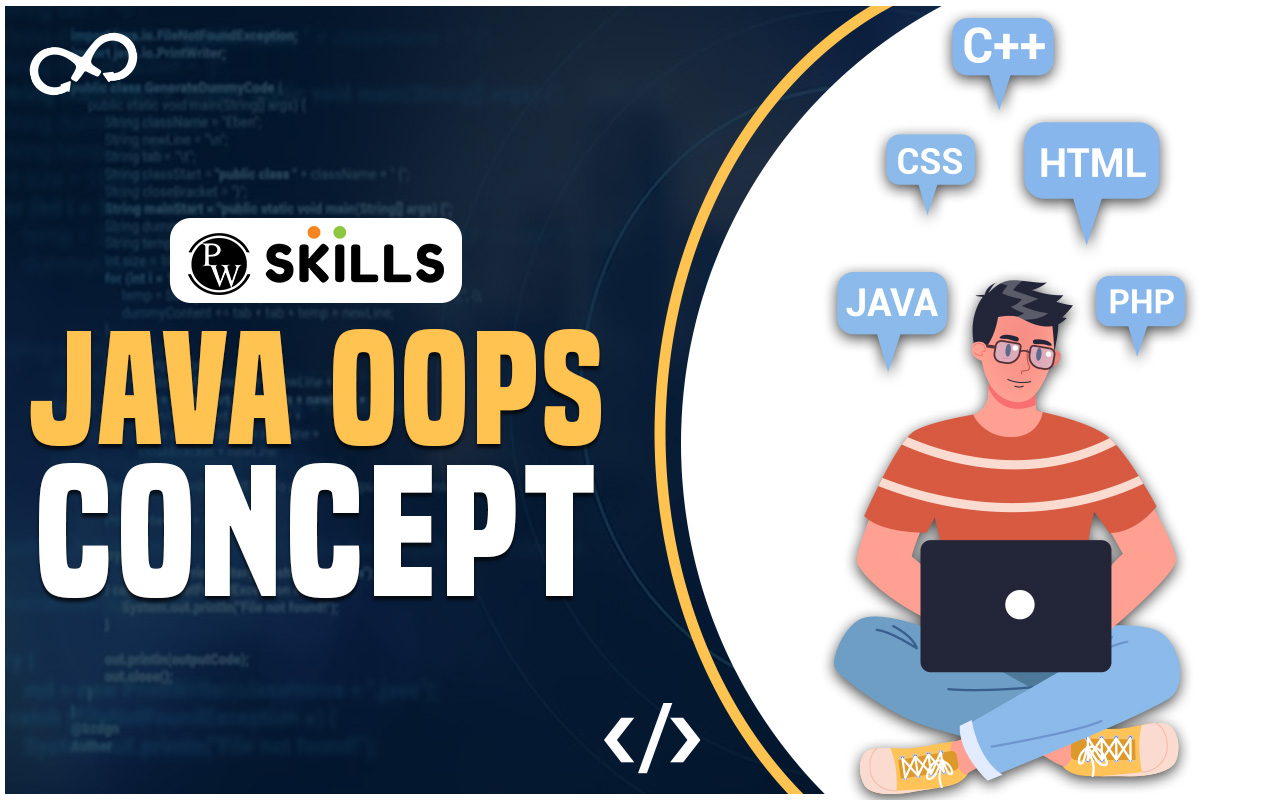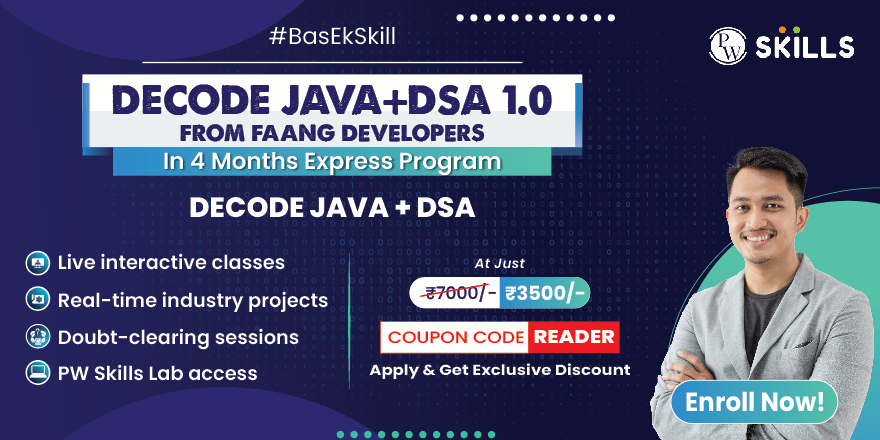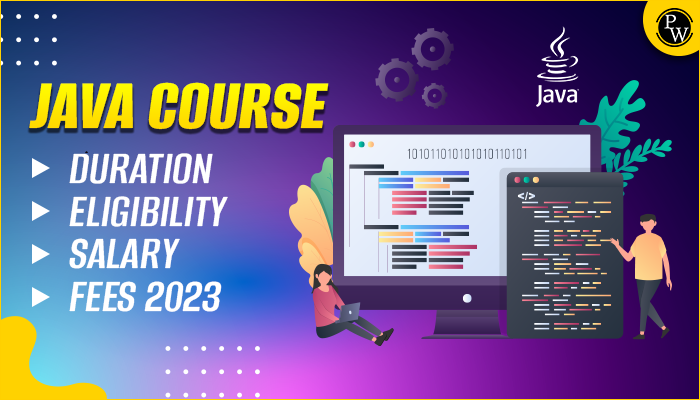OOPs Concepts in Java like inheritance, polymorphism, etc. are explained below. OOPs concepts play a crucial role in writing the Java codes. Keep reading to know more!
OOPs Concepts in Java: Java, known for its simplicity, reliability, and portability, has been a fundamental force in the programming landscape for decades. Guided by the principles of Object-Oriented Programming (OOP), Java empowers developers to conceptualize solutions in terms of real-world objects, encapsulating both data and behavior into reusable building blocks.
Whether crafting the smallest applications or architecting large-scale enterprise systems, OOPs Concepts in Java paradigm lays the foundation for modular, extensible, and robust software solutions, transcending the limitations of traditional procedural programming. Join us on an exciting journey as we delve into the principles, concepts, and techniques that establish OOPs concepts in Java as a transformative force in programming.
What are OOPs in Java?
Object-oriented programming and System (OOPS) concepts in Java are pivotal in simplifying code complexity and fostering reusability. By employing OOP principles, programmers engage with the coding process as if interacting with real-life entities or objects.
This programming paradigm integrates data and methods within a unified entity known as an object. This consolidation enhances comprehension and facilitates flexibility and code maintenance over extended periods.
According to Statista “Most used programming languages among developers worldwide” survey, Java held a substantial 41.1% share in early 2019.
Java is a programming language that was launched by Sun Microsystems in 1995 and is known for being fast, secure, and reliable. It has greatly changed throughout time, gaining more capability and a wider range of use. The latest Java versions boast numerous enhancements, improving Java application performance, stability, and security.
Object-oriented programming is at the core of Java programming, a methodology for designing programs using classes and objects. OOPs can be described as a means of data control for accessing code. In this approach, programmers define the data type of a data structure, and the operations applied to that data structure.
OOPs Concepts in Java with Examples
Let’s explore some fundamental Object-Oriented Programming (OOP) concepts in Java with examples:
1) Class and Object:
A class is a blueprint for creating objects, and an object is an instance of a class.
Example:
// Class definition
class Car {
String model;
int year;
// Constructor
public Car(String model, int year) {
this.model = model;
this.year = year;
}
}
// Object instantiation
Car myCar = new Car(“Toyota”, 2022);
2) Encapsulation:
Encapsulation is bundling data (variables) and methods that operate on the data into a single unit (class). Encapsulation, a fundamental concept in Object-Oriented Programming (OOP), bundles data and code into a cohesive unit, shielding them from external interference and misuse.
This entails concealing the data from other classes, allowing access exclusively through the methods of the current class, a practice commonly referred to as data hiding. The essence of encapsulation lies in creating a protective wrapper that guards the code and data against unauthorized access; all managed through a well-defined interface.
The encapsulation implementation involves declaring variables as private and providing public setter and getter methods for modifying and retrieving variable values. This approach renders the fields of a class either read-only or write-only, fostering control and restricting direct access. Beyond enhancing security, encapsulation contributes to code reusability and facilitates the unit testing of encapsulated code segments, ensuring a robust and well-contained software structure.
Example:
class Student {
private String name;
// Getter and setter methods for encapsulation
public String getName() {
return name;
}
public void setName(String name) {
this.name = name;
}
}
3) Inheritance:
Inheritance allows a new class (subclass or derived class) to inherit attributes and methods from an existing class (superclass or base class). Inheritance is a mechanism where one object obtains the properties of another object, facilitating hierarchical classification. The essence of inheritance lies in the ability to construct new classes based on existing ones.
When a class inherits from another class, it gains access to the methods and fields of the parent class, fostering code reusability. This relationship establishes a parent-child connection, creating a hierarchy of classes. You can explore a comprehensive free Java inheritance course to delve deeper into this concept.
To illustrate, consider the classification of marine animals. A whale, a specific instance, belongs to the category of marine animals, which, in turn, falls under the broader class of mammals. Mammals are further categorized as animals. This hierarchical classification follows a top-down approach.
When describing specific attributes of mammals, such as teeth or the nature of their blood, it becomes part of the subclass of animals, with animals being the superclass. The subclass inherits the properties of the superclass, also referred to as the derived class. Meanwhile, the superclass serves as the base or parental class, providing properties for the subclasses to inherit.
Example:
// Base class
class Animal {
void eat() {
System.out.println(“Animal is eating”);
}
}
// Derived class inheriting from Animal
class Dog extends Animal {
void bark() {
System.out.println(“Dog is barking”);
}
}
4) Polymorphism:
Polymorphism allows objects of different types to be treated as objects of a common type. It includes method overloading and method overriding. Polymorphism, derived from the Greek words “poly” (many) and “morphē” (forms), encompasses a process that executes a single action in various ways. It materializes when multiple classes are interconnected through inheritance. There are two main types of polymorphism: compile-time polymorphism and runtime polymorphism.
Compile-time polymorphism, exemplified by method overloading in Java, occurs when multiple methods share the same name but differ in parameters or types. The determination of which method to invoke is made at compile time.
On the other hand, runtime polymorphism, also known as dynamic method dispatch, resolves a call to an overridden method during runtime rather than compile time. The overridden method is invoked through the reference variable, allowing for flexibility in method execution. Method overloading and method overriding are essential components in achieving polymorphism.
In practice, polymorphism is often summarized as “one interface, multiple methods.” This conceptualization streamlines complexity by enabling a single interface to serve as a general class of action, demonstrating the versatility and adaptability inherent in polymorphic systems.
Example:
// Method overloading
class MathOperations {
int add(int a, int b) {
return a + b;
}
double add(double a, double b) {
return a + b;
}
}
5) Abstraction:
Abstraction is the process of hiding the implementation details and showing only the necessary features of an object. Abstraction is a procedural concept that focuses on presenting only the essential information while concealing unnecessary details.
It involves selecting pertinent data from a larger pool of information to showcase only what is required. The primary objective of abstraction is to facilitate data hiding, reducing programming complexity and efforts.
An abstract method is characterized by having a method definition without actual implementation.
The same data set can be utilized across various applications by employing data abstraction, wherein objects are modeled. This is achieved through the use of abstract classes, which encapsulate generic types of behaviors and establish an object-oriented programming hierarchy.
Abstract methods prove invaluable when multiple subclasses are tasked with performing the same function but in distinct ways and through diverse implementations. Notably, an abstract class can accommodate both abstract and regular methods, offering flexibility and versatility in design and implementation.
Example:
// Abstract class
abstract class Shape {
abstract void draw(); // Abstract method
}
// Concrete class implementing Shape
class Circle extends Shape {
void draw() {
System.out.println(“Drawing a circle”);
}
}
Also Read – Java OOP (Object-Oriented Programming)
OOPs Concepts in Java Interview Questions with Answers
Here are some of the Java interview questions with answers:
1) What does OOPs stand for?
OOPs stands for Object-Oriented Programming, a programming paradigm centered around the use of objects. Objects are instances of entities, such as classes, possessing characteristics and behaviors.
2) Why is OOPs preferred?
OOPs is preferred for several reasons:
- Enhances software understanding, even without knowledge of the actual implementation.
- Improves code readability, understandability, and maintainability.
- Facilitates the creation and management of large-scale software.
3) Name some major Object-Oriented Programming languages.
Major Object-Oriented Programming languages include:
- Java
- C++
- JavaScript
- Python
- PHP
- And more.
4) Define Structured Programming.
Structured Programming is a programming method with a completely structured control flow. It involves rules within structures, like (if/then/else), (while and for) loops, block structures, and subroutines. Most programming paradigms, including OOPs, incorporate structured programming.
5) What are the main features of OOPs?
OOPs comprises four main features:
- Inheritance
- Encapsulation
- Polymorphism
- Data Abstraction
6) What are some advantages of OOPs?
OOPs provides solutions to complex problems, simplifies program creation and maintenance, promotes code reuse, hides unnecessary details with Data Abstraction, and offers flexibility through Polymorphism.
7) What is a class?
A class is a template or blueprint containing member data and behaviors.
8) What is Abstraction?
Abstraction involves hiding unnecessary details from users, displaying only essential information. It simplifies programming complexity and efforts by focusing on relevant details.
9) How much memory does a class occupy?
Classes do not consume memory; they are blueprints. Memory is consumed when objects are created based on these classes.
Also Read – What is Polymorphism in OOPs
OOPs Concepts in Javascript
As a versatile and object-oriented scripting language, JavaScript incorporates these concepts to facilitate the creation of modular and scalable code. Below table shows some essential Object-Oriented Programming (OOP) concepts in JavaScript:
| OOPs Concepts in Javascript | |
| Concept | Description |
| Encapsulation | Bundling data (attributes) and methods that operate on the data into a single unit, protecting it from outside access. |
| Inheritance | Mechanism for creating a new class that inherits properties and behaviors from an existing class, promoting code reuse. |
| Polymorphism | Capability of a single function or method to operate in different ways based on the context, achieved through overloading or overriding. |
| Abstraction | Displaying only essential information and hiding unnecessary details, reducing complexity and enhancing clarity. |
Is a Career in Java Programming Worth it?
- Java remains one of the most sought-after programming languages in the industry. Many organizations, from startups to established enterprises, rely on Java for building robust and scalable applications.
- Java’s “Write Once, Run Anywhere” (WORA) principle allows developers to create applications that can run on different platforms without modification. This cross-platform compatibility is a significant advantage in today’s diverse technology landscape.
- Java has a vast and active community of developers worldwide. This community provides support, resources, and a wealth of knowledge, making it easier for newcomers to learn and grow in their careers.
- Java developers are in high demand across industries. A strong skillset in Java programming opens up opportunities for roles such as Java Developer, Software Engineer, Full Stack Developer, and more.
To kickstart your journey in Java programming and Data Structures and Algorithms (DSA), consider enrolling in the “Decode Java+DSA 1.0″ course by Physics Wallah. This comprehensive course covers key Java concepts and DSA topics, equipping you with the skills needed to excel in the field. By using the “READER” coupon, you can avail instant discounts and make this valuable learning opportunity even more affordable.
Investing in your Java programming skills with Physics Wallah’s course can be the stepping stone to a successful and fulfilling career. Stay ahead in the competitive tech industry by acquiring expertise in Java and DSA, and unlock a world of possibilities.
OOPs Concepts in Java FAQs
What is abstraction in Java?
Abstraction in Java involves simplifying complex systems by modeling classes based on the essential features they provide while hiding unnecessary details. Abstract classes and interfaces are used to achieve abstraction.
How are interfaces used in Java OOP?
Interfaces in Java define a contract for classes that implement them. They contain abstract methods that the implementing classes must implement. Interfaces provide a way to achieve multiple inheritance and are used to define common behaviors for unrelated classes.
How does Java support multiple inheritances?
Java supports multiple inheritance through interfaces. A class can implement multiple interfaces, allowing it to inherit method signatures from multiple sources. However, Java only supports one class inheritance to avoid the diamond problem.
What is the significance of the 'super' keyword in Java OOP?
The 'super' keyword in Java refers to the immediate parent class's object or members. It is often used to invoke the parent class's methods, access fields, or call the parent class's constructor.
Explain Inheritance in Java OOP.
Inheritance is a mechanism in Java that allows a class (subclass or derived class) to inherit properties and behaviors of another class (superclass or base class). It promotes code reusability and establishes a relationship between classes.




